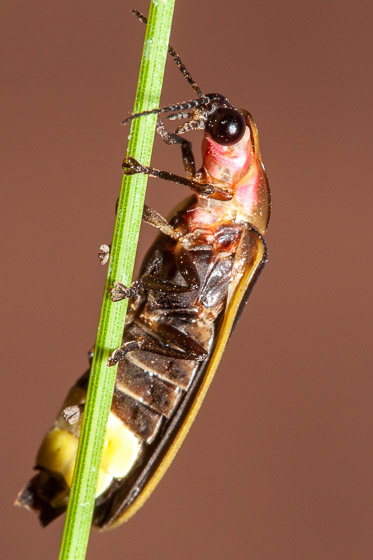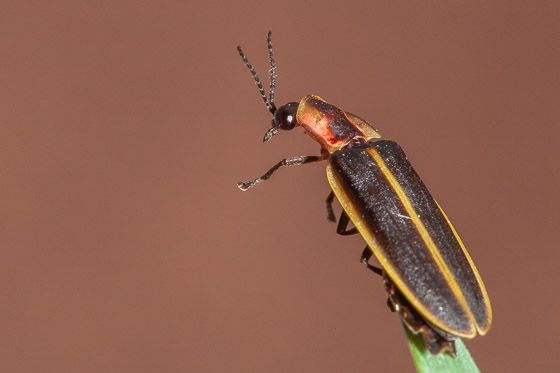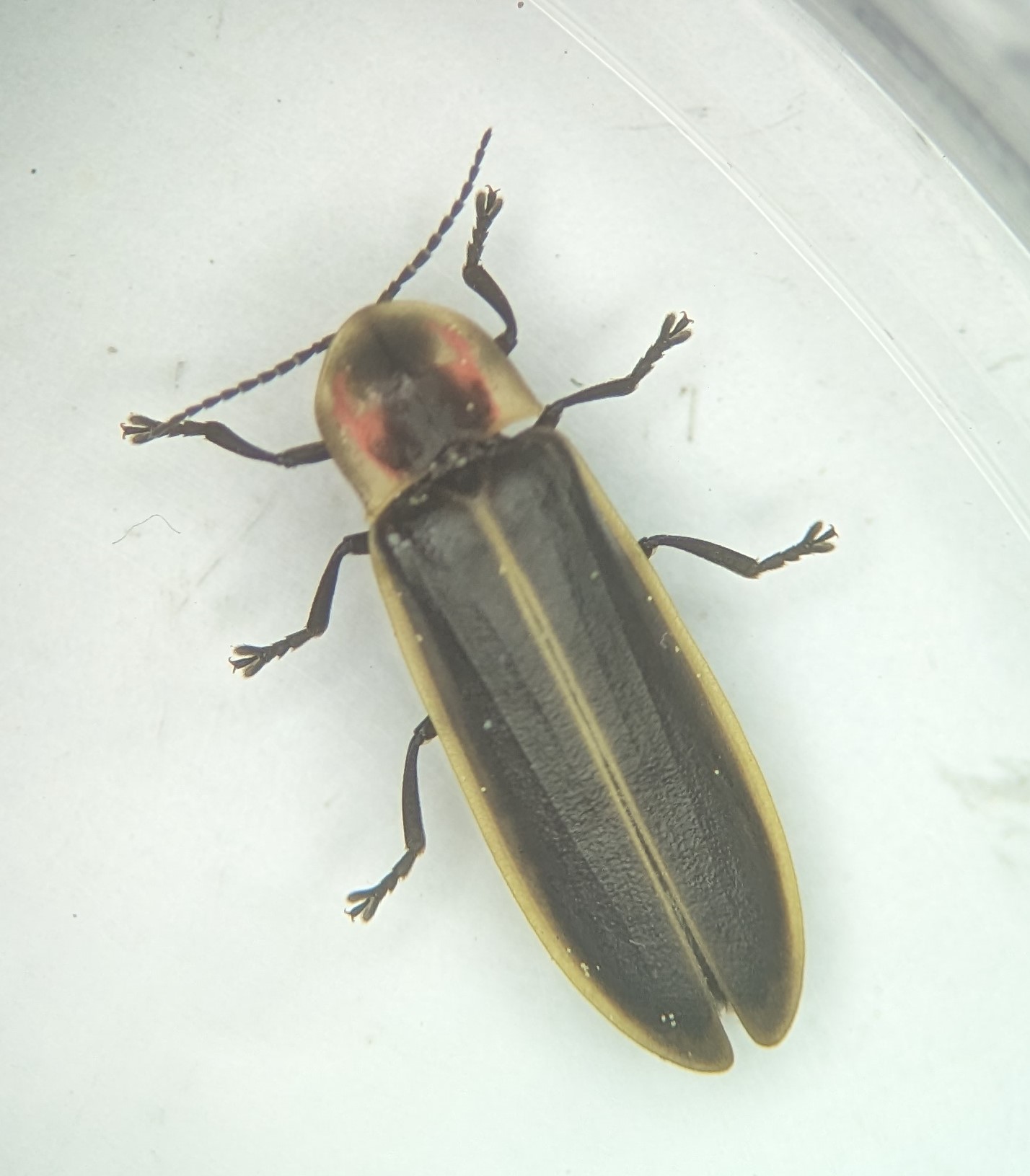Pyractomena dispersa (Mountain Variety Marsh Flicker)
Taxonomy
- Class: Insecta
- Order: Coleoptera
- Family: Lampyridae
- Genus: Pyractomena
- Scientific Name: Pyractomena dispersa Green, 1957
- Common Name: Mountain Variety Marsh Flicker
- Synonyms:
Taxonomic Name Source
Green, J.W. 1957. Revision of the Nearctic species of Pyractomena (Coleoptera: Lampyridae). Wasmann Journal of Biology 15: 237-284.
Species Occurrence Data From: Global Biodiversity Information Facility (GBIF)
Agency Conservation Status
- SGCN
- NMDGF:
- USFWS:
- BLM:
- USFS:
- IUCN Red List: Data Deficient
- Nature Serve Global: GU
- NHNM State: SNR
- NM Endemic NO
Agency Conservation Status
| SGCN | NMDGF | USFWS | BLM Status | USFS | IUCN Red List |
Nature Serve Global |
NHNM State | NM Endemic |
|---|---|---|---|---|---|---|---|---|
| Data Deficient | GU | SNR | NO |
Description
Pyractomena species can be distinguished from other flashing firefly genera by their sculpted pronotum with a raised midline ridge, often referred to as a median keel (Lloyd 2018). In the eastern United States, Pyractomena dispersa Green, 1957 is fairly easy to identify because it usually does not have dark markings on the outer margins of its pronotum, as is seen in many other Pyractomena species (Faust 2017). In addition, the scutellum of P. dispersa, while mostly dark, has a slightly pale apex. It also has inconspicuous primary pubescence, which is sparse and short basally, but longer distally and the secondary pubescence covers the apical fourth of the elytral surface (Green 1957). Males are typically 9-12.5 mm in length, and females are 8-12.5 mm (Green 1957). In the western US, many populations of a certain Pyractomena firefly have, to date, been identified as Pyractomena dispersa. However, these western P. dipsersa, dubbed “mountain variety P. dispersa”, or “The Wiggle Dancer” by Buschman (2016), have several differences from their eastern counterparts. Most notably, specimens from western populations often have a slight darkening along the margins of the pronotum. There are also differences in the male genitalia, thorax, and labrum (Pacheco 2014).







